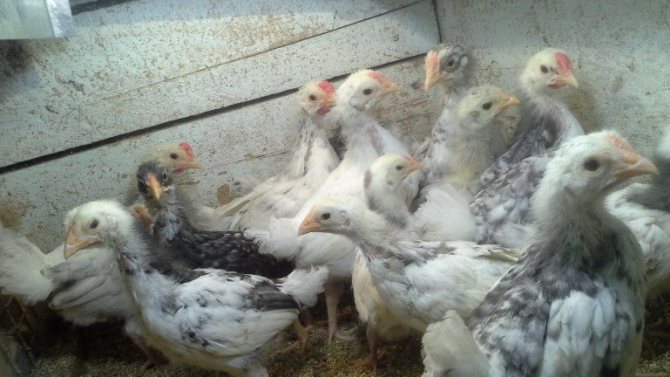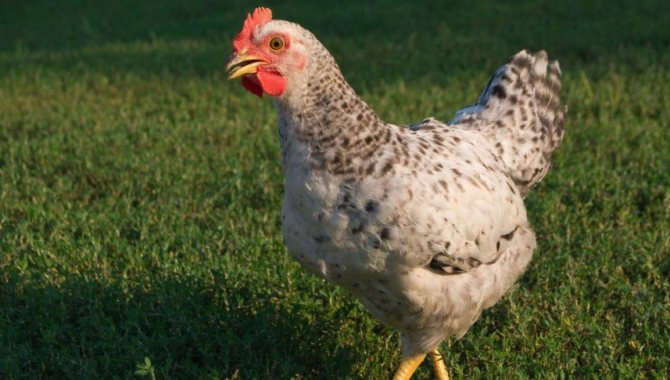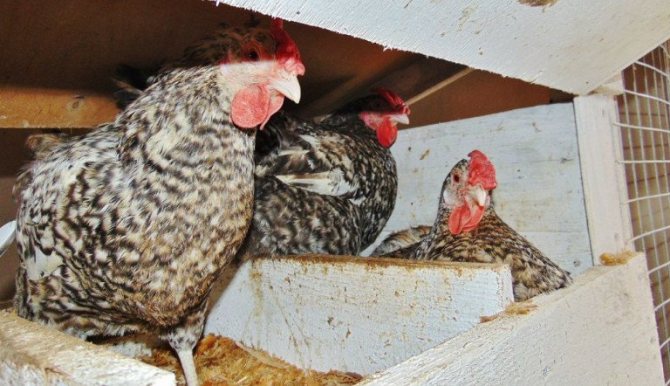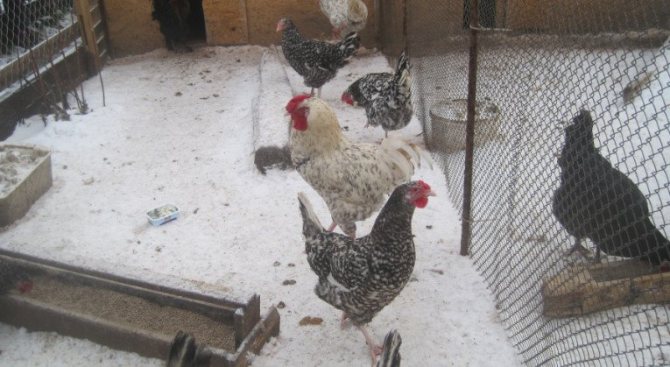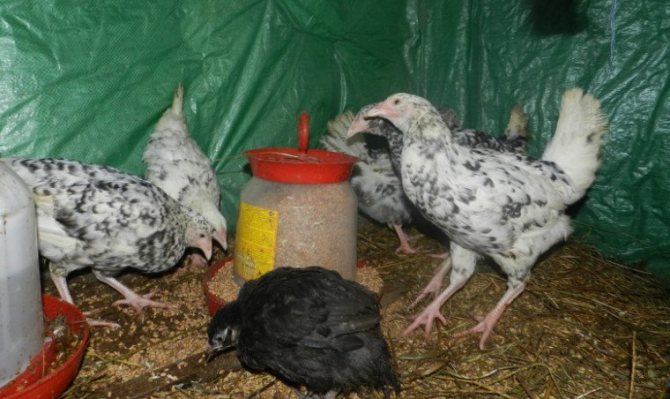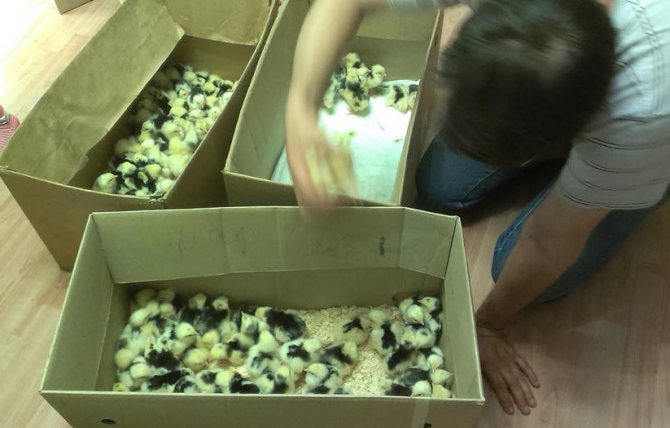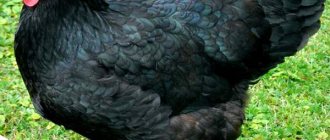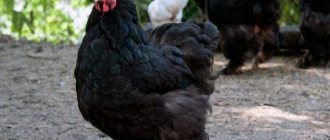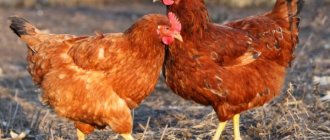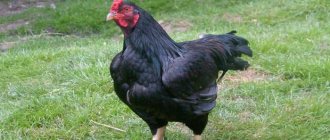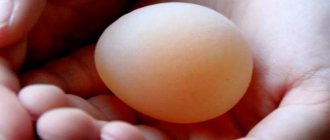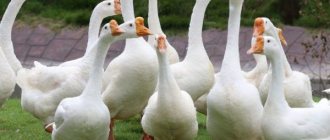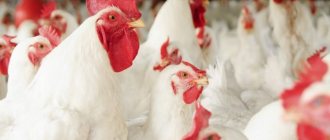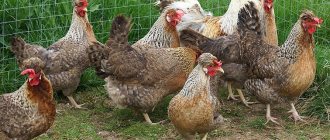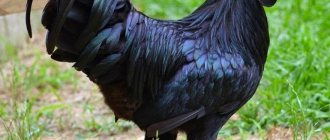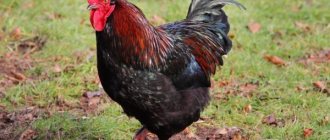Hello dear visitors of our portal! Pushkin breed of chickens in our material. Since ancient times, the society has been breeding domestic animals, in particular - winged animals, in order to obtain eggs, meat and other poultry products.
But man's innate desire to improve everything he has has allowed the production of many new varieties of chickens that surpassed their ancestors in terms of productivity.
One of the most popular types of selection is the Pushkin breed of chickens, known far beyond the borders of Russia. We will talk about it in this article.
History of the Pushkin chicken breed
Breeding was carried out by Soviet scientists from the city of Pushkin, Leningrad Region, and Sergiev Posad. Their goal was to create an egg-and-meat chicken. The ancestors of the Pushkin chickens were the black and motley australorpes, white shavers 288 and leghorns. The breeders were not completely satisfied with the result. To improve the meat characteristics, breeders from the Leningrad region crossed the representatives of the new breed with the domestic broiler-6, and then also with the Russian white chicken. This is how the St. Petersburg line of Pushkin chickens was formed.
The result was pleasing - Pushkin chickens adopted a large body and good egg production from their ancestors. In addition, they inherited from the white Russian chickens the ability to adapt to the conditions of the local climate. The Pushkin chicken was entered in the state register in 2007, 40 years after the start of breeding work.
Reference. Now in the breed there are 2 lines of chickens - Moscow and Leningrad (St. Petersburg). The first is characterized by better meat performance, while the second lays more eggs. Outwardly, the birds differ from each other in the color of the feathers and the shape of the scallop - in St. Petersburg chickens it is rosy, and in Moscow chickens it is leaf-shaped.
Description and characteristics of the bird
Representatives of the Pushkin breed have a beautiful color. Roosters have white plumage with small blotches of dark spots. The variegated feathers of the females are black and white. The St. Petersburg type is characterized by a speckled color, although white and black stripes are clearly visible on individual feathers.
Exterior features
Representatives of the discussed breed look attractive. Strong physique and proud bearing are the distinctive features of these birds.
External characteristics from the photo:
- the average weight of a rooster is 3 kg, of a chicken - 2–2.3 kg;
- the torso is trapezoidal;
- a small head with a strong, short ivory beak;
- the crest is leaf-shaped straight in the representatives of the Moscow variety and pink-shaped in the St. Petersburg variety;
- eyes are bright orange;
- long stately neck;
- the back is massive, straight;
- tail raised high;
- the wings are short, tightly pressed to the body, slightly lowered;
- the limbs are well muscled;
- bared metatarsus long, light shade;
- fingers of the correct shape are widely spaced;
- white claws.
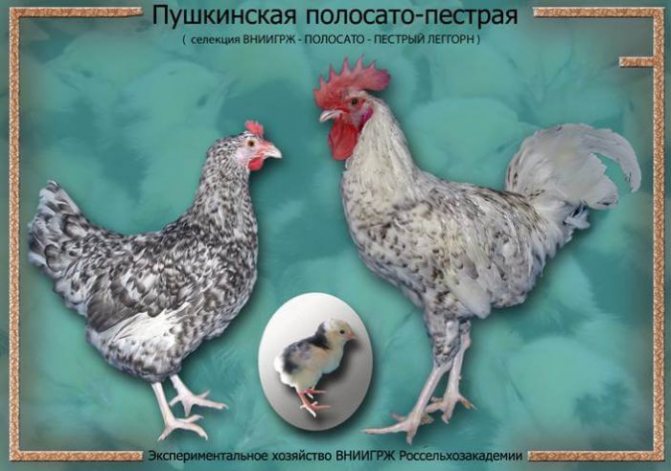
The appearance of the representatives of the breed
Attention! Chickens of the St. Petersburg variety are slightly larger than their Moscow relatives.
Temperament
Representatives of the Pushkin breed are active and inquisitive, but not aggressive. Having got used to a new place and owner, they even allow themselves to be held in their hands.
In a chicken coop, conflicts do not arise if the birds get everything they need.Pecking and aggression can be triggered by a lack of nutrients or poor living conditions.
Productivity indicators
The record-breaking layers of the Pushkin breed yield up to 260 eggs per year, while the average is lower - 200 eggs. Egg weight is 60 g. In the second year of life, the size of the eggs obtained increases. The shell can be white or beige. The taste of the product is excellent - the yolk is sweetish and rich in orange color.
The percentage of egg fertilization does not fall below 95%. The survival rate of young animals is at the same level. Chickens of this breed are appreciated not only for egg productivity, but also for the opportunity to get tasty meat. Young males are sent for slaughter, which are not involved in breeding, as well as layers after a decrease in productivity.
Attention! Puberty in chickens of the Pushkin breed begins at 5 months, after which they begin to actively rush. The peak of egg production occurs during the warm season.
Productivity
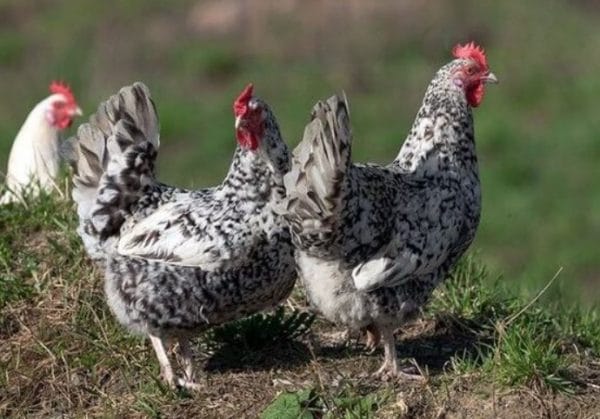

The bird belongs to the egg direction
Keeping poultry is cost-effective on a commercial farm and on a personal backyard.
Egg
Oviposition at 5-5.5 months. The first eggs are small, weighing 50 g. After 2-3 months, the size of the eggs increases to 65 g, and from one year to 75 g. The shell is creamy or white. The yolks are beautiful, rich yellow, fatty.
Meat
To obtain meat, extra roosters are fattened. The product tastes good. The carcass has a good presentation. The skin of Pushkin chickens is white, dense, not damaged during the plucking process. When sold, such carcasses are quite expensive.
Interesting! If a couple of weeks before slaughtering increase the nutrition of the chickens, then fat will form under the skin and the carcass will turn yellow. It looks beautiful, but the quality of the meat reduces.
Features of keeping Pushkin chickens
Representatives of the domestic breed are unpretentious to the conditions of detention. Even in an unheated house, they do well. In regions with harsh winters, the chicken coop is insulated, closing up all the cracks. In the household, birds are kept on the floor on a deep litter with the possibility of walking. In the warm season, it is useful for layers to be outdoors and move more.
Attention! The height of the fence of the walking area for this breed is at least 1.5 m.
In the poultry house, perches are installed at a height of 50-60 cm and nests. For every 10 hens, 3 nest boxes will be needed, which are placed in darkened places and covered with a layer of straw. To prevent infection with skin parasites, the poultry house is equipped with a container filled with ash and sand. Chickens clean their feathers there.
Bird maintenance includes regular cleaning of the barn. Disinfection is carried out 2-3 times a year using sulfur checkers or special solutions that destroy bacteria, fungi and viruses. Drinking bowls and feeders are washed at a frequency of 1 time in 2-3 days, and containers for wet mash - daily.
Ideal house conditions:
- temperature within + 10 ... + 26 degrees;
- humidity - 55–65%;
- good ventilation to ensure the removal of harmful vapors;
- purity.
Feeding
One of the features of meat and egg chickens is an excellent appetite and a tendency to overeat. Obesity is bad for egg production. Malnutrition also affects the performance of livestock, so it is important to properly formulate the diet of birds.
Attention! Pushkin chickens are given 15% more feed than representatives of egg breeds.
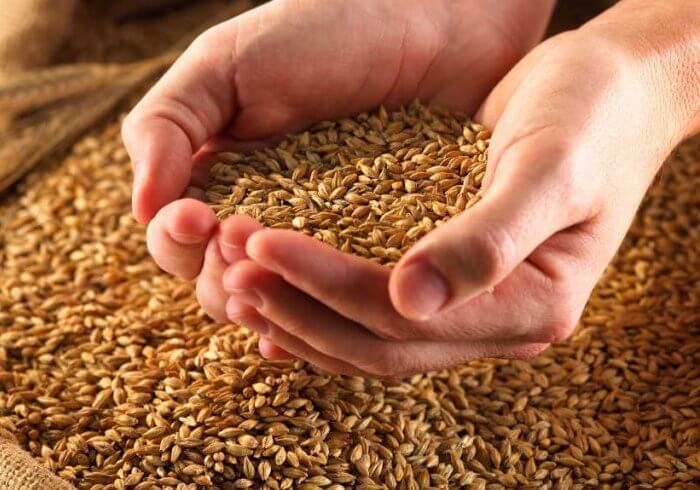

Grains are the basis of the diet.
The basis of the diet is grain. The bird menu includes several types of grain crops - millet, barley, oats. Legumes - peas, lentils - are used as a source of protein. Birds willingly eat vegetables - carrots, fodder beets, potatoes. In the spring-summer period, hens are offered grass - young greens of nettle, dandelion, tops of garden crops. Alfalfa is beneficial in small amounts.
Mineral supplements in the diet of Pushkin's chicken:
- a piece of chalk;
- salt;
- shell;
- bone flour;
- yeast.
Chickens of the Pushkin breed gladly eat everything they are given. Waste from the table can also serve as food for them, but not all. Fish is given without bones and only boiled, like meat. Small amounts of animal food are offered. The birds also love low-fat cottage cheese, whey,
Chickens should be fed at regular intervals and should not be allowed to starve. It is correct to feed the birds in the morning and in the evening with grain - whole, ground or sprouted, and at lunchtime - with wet mash, grass and vegetables.
Attention! It is important to ensure that wet food does not linger in the troughs in summer, as it quickly deteriorates. Having eaten fermented food, chickens can get sick.
Feeding
A correctly composed feeding ration is the key to the successful growth of any inhabitants of the household, including representatives of the Pushkin breed of chickens. Therefore, feed must necessarily contain:
- Proteins. The main material required for the construction of cells in the body. Proteins of vegetable origin include oilcake and sunflower meal, soybeans, rapeseed, legumes; animal - bone meal, fish meal, earthworms.
- Fats. The main energy reserve is formed, which is deposited in the subcutaneous layer of the bird. Their supply can be ensured by feeding corn and oats.
- Carbohydrates. The key to the work of all organs. Contained in juicy feed: potatoes, carrots, pumpkin, fodder beets. For normal life, fiber must be present in food. This element is contained in a whole grain shell.
- Minerals. Building component for the formation of the skeleton of chicken and eggshell. Its source is lime, wood ash, crushed shell.
- Vitamins. Substances that must necessarily be in the diet of a bird. Their absence or insufficient amount is the cause of diseases and a decrease in productivity. The source of vitamins is green grass, fish oil, silage, pine flour.
Sand and crushed gravel are reflected favorably on the digestion of poultry.
Breeding features
Chickens of the Pushkin breed reach sexual maturity at the age of 5 months. For good fertility of eggs, males are given feed enriched with vitamins A and E, parsley and sprouted grains. In the hen house, 1 male is left for every 15–20 hens due to the high activity of the latter.
Birds with the following disadvantages are not allowed for breeding:
- in the color of feathers or down there is a gray or yellow tint;
- improper posture;
- lack of white feathers;
- too long and bushy tail, it is called "squirrel".
Chickens are hatched in an incubator, since Pushkin chickens do not sit on eggs, they have lost their incubation instinct as a result of long-term selection. For incubation, medium-sized eggs with clean and undamaged shells are selected. The development of the embryo lasts 21 days, after which chickens hatch together from the eggs. In the first 3 weeks of life, they need special care. Chicks are placed in wooden boxes, brooders, where the temperature is maintained at 27-30 degrees Celsius. Every week it is lowered by 2-3 degrees.
Day-old chickens are fed with boiled eggs. The introduction of new products is gradual. The diet of babies is made up of products:
- corn grits;
- millet;
- skim cheese;
- serum;
- boiled fish;
- potatoes;
- carrot;
- greens.
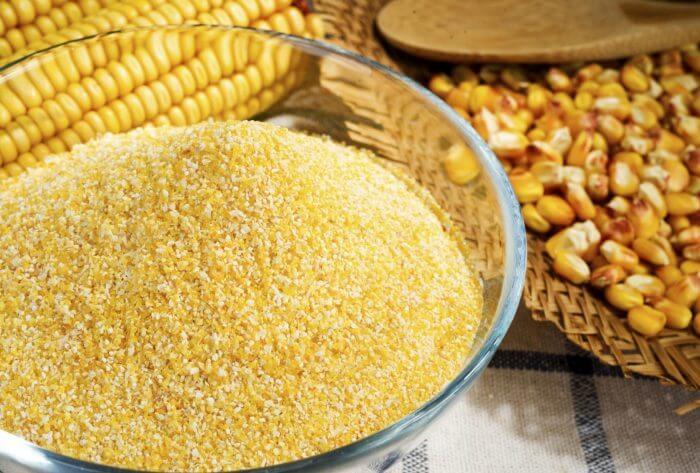

Corn grits
Epilogue
The above information allows us to consolidate the understanding that the Pushkinskaya grouse is the best option from the category of domestic poultry. These chickens can be both egg-laying and meat-bearing chickens, or they can become homemade chickens, wonderful pets for children.
With this review, we tried to cover the most important points characterizing the species under consideration. We sincerely wish you, our readers, prosperity and success! We will be grateful if you subscribe to site updates.
In return, we will try to provide up-to-date articles about poultry. Do not forget to share the material you read on social networks, it will also be useful for your loved ones to study the information about highly productive layers.
Good luck!
In the comments you can add your photos of laying hens, rooster and chickens! Or other poultry. We're wondering what kind of chicken coop you have?
Reviews of the breed
The Pushkin breed of chickens is an ideal option for a private farm, as evidenced by reviews of poultry farmers. Oksana from the village of Kamennoye notes that the declared productivity of these birds is true, and the eggs obtained are even larger than she expected. The woman declares that Pushkin's chickens are unpretentious and get along well with each other in the chicken coop, but they can hardly be called melancholic. Birds love to be active, take off, and catching them in the yard is not so easy - they run away.
Vasily from the Siberian hinterland emphasizes that Pushkin's layers are not afraid of the cold. In frosty winters, chickens do not freeze even without heating devices. The main thing is to insulate the walls, roof and floor well.
Laying hens of the Pushkin breed are worthy of attention of poultry farmers living in the regions of the middle lane. They are not afraid of the cold, unpretentious to the conditions of keeping and feed, they are distinguished by high productivity, providing their owners with large eggs and tasty meat.
Food
Correct and balanced nutrition is the key to success for the growth of chickens and adult birds and the fact that Pushkin chickens begin to lay early. Birds of this species do not overdo their food, which simplifies the conditions for their keeping. These variegated birds are very fond of mixed feed and various cereals. The main thing is not to feed them with different types of food at the same time.
Chicks need to be fed 3-4 times a day, and adults - 1-2: at dawn (at 5-6 hours) and in the evening (at 17-18). In a warm period, the bird can be released for a walk: it will be able to independently obtain useful vitamins for itself. It is better not to let such an individual enter the garden, because in this case there is a risk of being left without a crop. It is best to feed the hens separately so that they know if they are getting enough feed.

